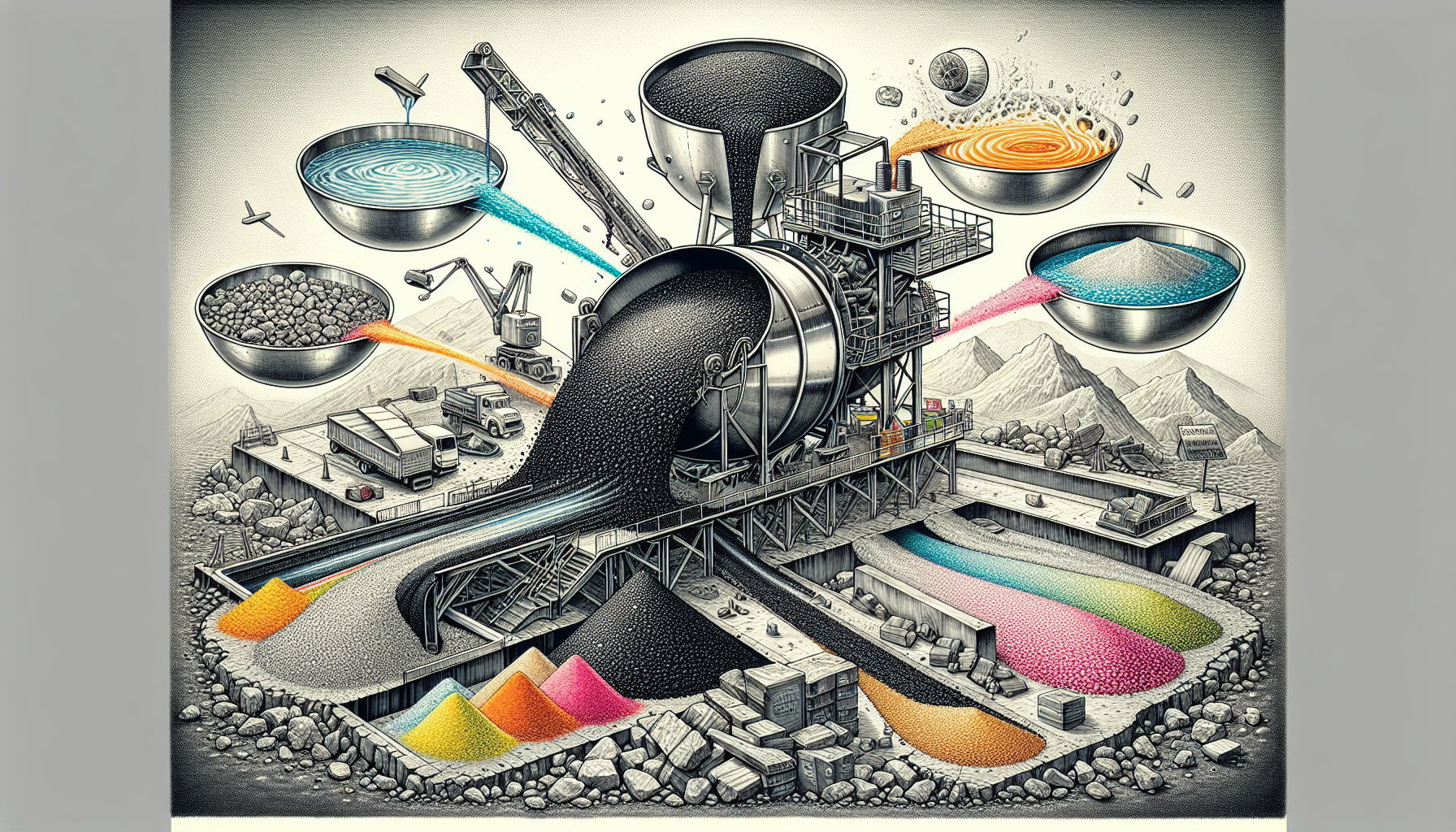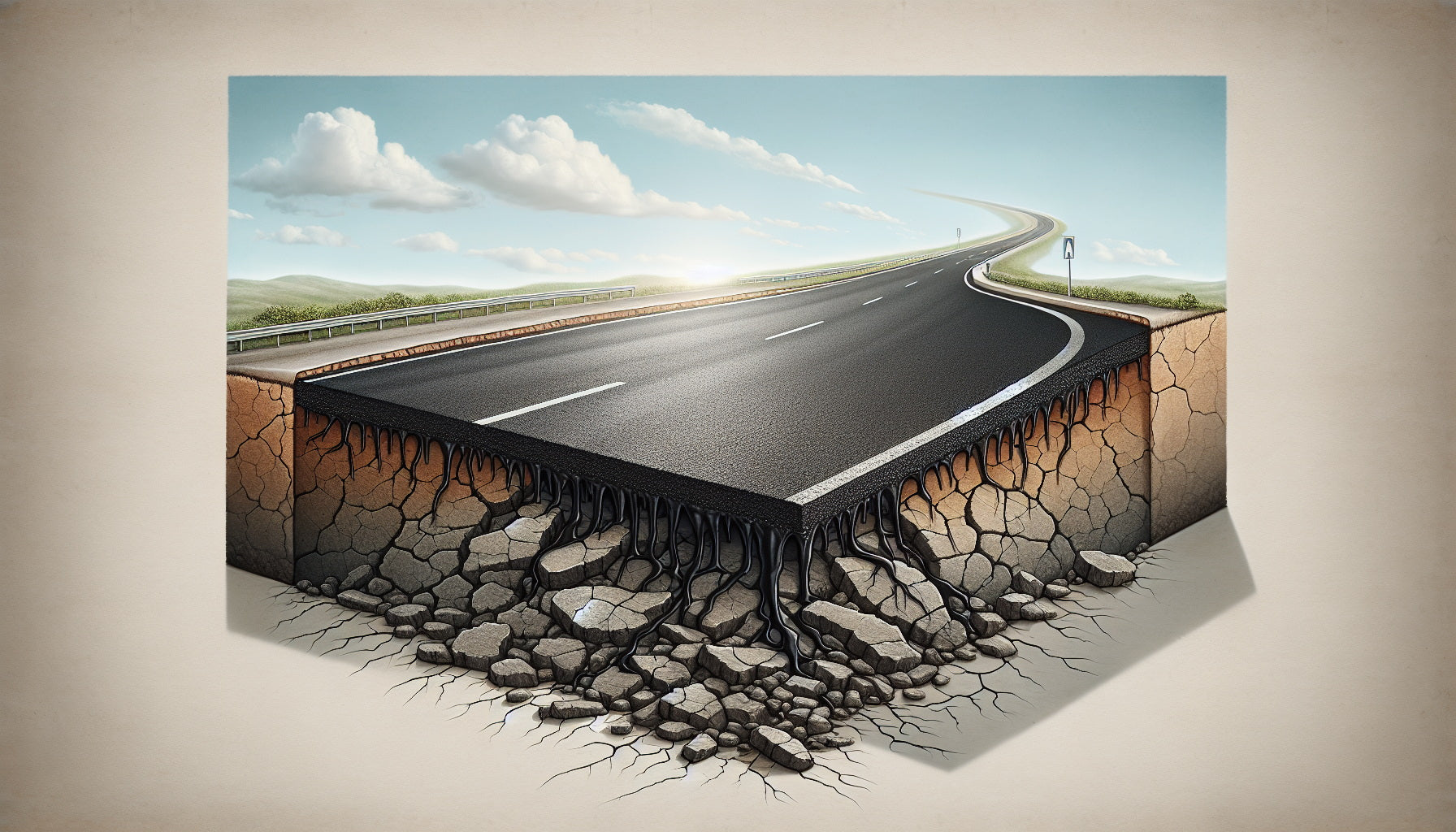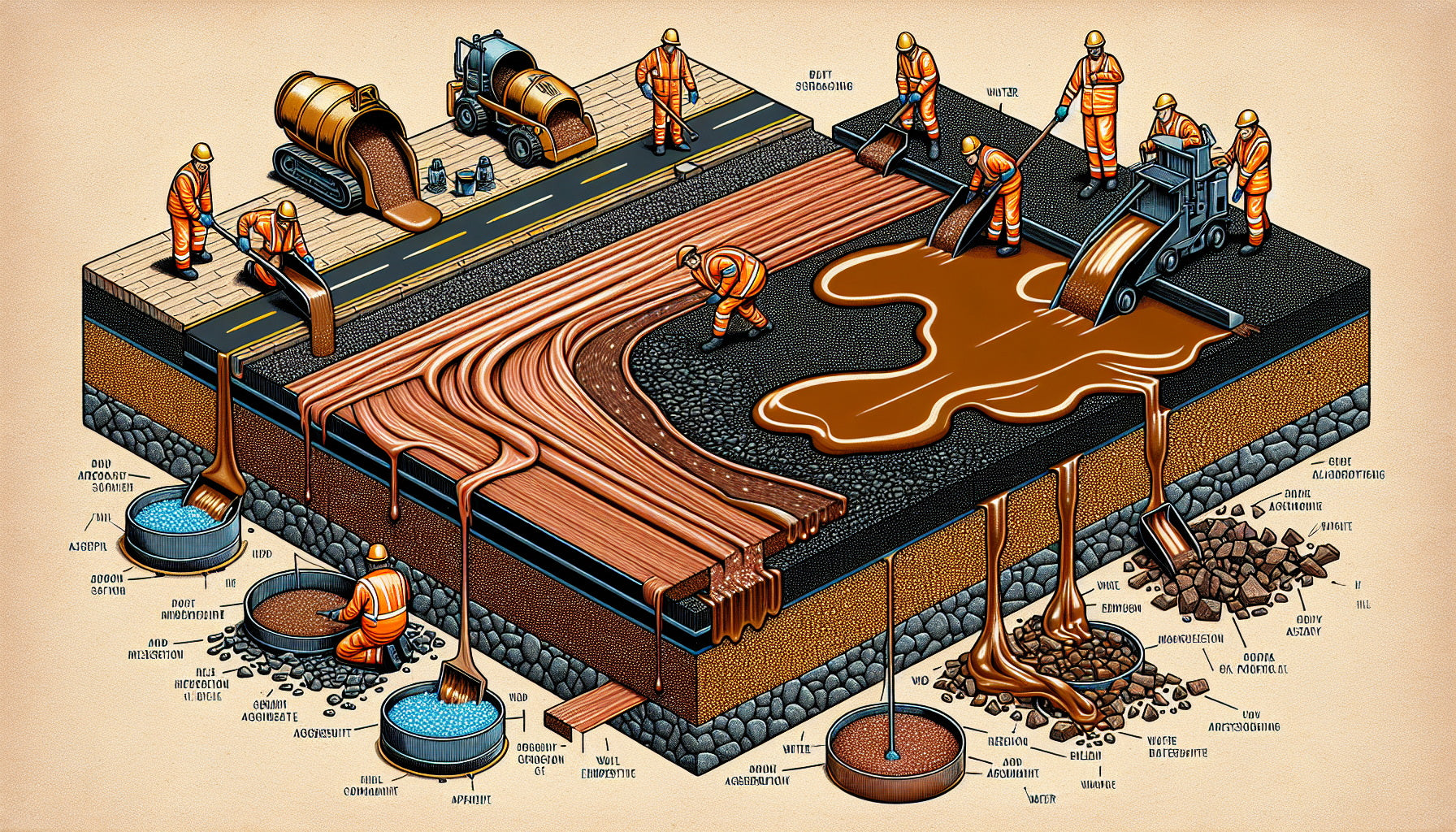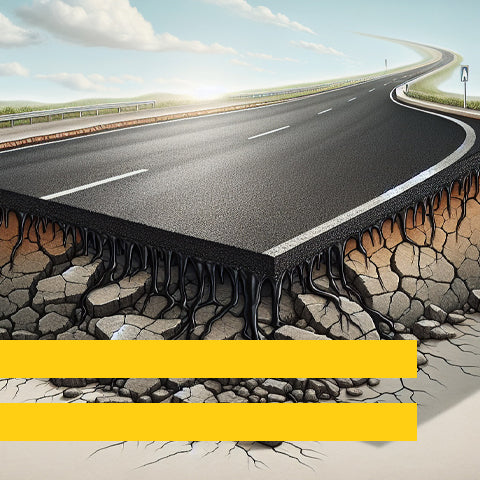What Is Slurry Seal? The Ultimate Guide
Asphalt slurry seal is essential for maintaining and prolonging pavement life. This method seals surfaces to keep them in good shape, but how exactly does it work? Our article breaks down its composition, the practical steps of its application, and its benefits for road durability and safety, providing a full scope for property managers and road maintenance teams.
Key Takeaways
- Asphalt slurry seal is a preventative maintenance method that extends pavement life by creating a new wear layer with a mix of emulsified asphalt, water, fine aggregate, and additives.
- Proper application of slurry seal involves careful preparation of the pavement, a precise mixing process, and a specified curing period to ensure optimal adhesion and performance.
- Slurry seal offers advantages such as extending the service life of roads, improving safety and skid resistance, sealing minor imperfections, and enhancing the aesthetic appeal of asphalt surfaces.
Understanding Asphalt Slurry Seal

Venturing and exploring. In the domain of roadway upkeep, we examine the intricacies of asphalt slurry seal. Utilizing a concoction that consists of emulsified asphalt, water, fine aggregate, and various additives, this technique is designed to reinforce an existing pavement surface. Its effectiveness stems from its capacity to form a fresh wear layer on top of the pavement. This new layer not only augments the longevity but also improves both aesthetics and utility of the pavement surface.
Emulsion and Aggregate Components
A slurry seal is crafted from a carefully balanced mixture of fine aggregates and asphalt emulsion. This durable blend forms a protective layer that bonds to the existing pavement, efficiently smoothing over small flaws and offering a renewed surface designed to endure the rigors of time and continuous traffic.
Additives and Their Functions
Additives are essential in boosting the efficacy of slurry seals. Incorporated into the asphalt emulsion, polymers—one of these key additives—augment elasticity, enhance durability, and bolster resilience within the slurry mixture. This inclusion is crucial as it enables the slurry seal to withstand diverse temperature ranges and bearing loads, thus providing enduring defense for surfaces.
Slurry Seal Application Process

Administering a slurry seal to the pavement surface is an exercise in precise execution, orchestrated with attention to detail. The process encompasses several crucial steps.
-
Ready the surface of the pavement
-
Formulate the mixture for the slurry
-
Spread out this blend over the surface
-
Observe a defined duration for curing
Every stage is essential in guaranteeing that not only does the slurry seal adhere properly, but it also functions according to expectations, thereby achieving successful treatment outcomes.
Pavement Surface Preparation
Prior to applying the slurry seal, it’s crucial that the existing pavement is properly prepped. Ensuring a surface that’s both clean and mended is essential for optimal adherence of the slurry. To prepare this base, extensive cleaning is conducted to eliminate any particles or impurities, and all damages must be fixed. This sets up an ideal foundation for the effective application of the slurry seal on the pavement.
Mixing and Applying the Slurry Mixture
The process begins as the slurry mixture is prepared in a specialized vehicle. The composition of this concoction includes:
- Emulsified asphalt
- Water
- Aggregates
- >Additives
To guarantee uniformity, skilled operators carefully monitor the automated blending prior to its application on the pavement.
Following that, with meticulous care akin to an artist’s touch, this coarse concoction is applied across the prepared surface area. This creates an even new layer destined to endure both tire traffic and pedestrian footsteps—essential factors in deciding how long-lasting the surface will be.
Curing Time and Traffic Considerations
Endurance is key during the last stage of applying a slurry seal. The fresh slurry layer must be given adequate time to harden, usually between 4 to 6 hours before it can sustain vehicular traffic once again. This setting period may vary based on weather conditions and the type of pavement being treated.
Throughout this crucial interval, managing vehicle flow is essential in safeguarding the integrity of the slurry seal so that it sets properly and becomes durable enough for regular wear and tear from daily traffic.
Advantages of Slurry Seal for Asphalt Surfaces

Slurry seal offers a wide array of benefits for asphalt surfaces, which include the following:
- Prolonging the life of pavement
- Improving safety features
- Sealing against and mitigating damage
- Greatly improving the visual attractiveness of roads with an even, sleek coating.
Extending Pavement Life
Applying a slurry seal extends the lifespan of pavement by postponing the natural deterioration due to aging. Perfectly tailored for streets that exhibit initial signs of wear but lack significant damage, slurry seal acts as a protective barrier against external factors that may prematurely diminish a road’s service life. While it doesn’t provide a structural repair, this preventative measure is an investment in prolonging the time before more extensive repairs are required.
Improving Skid Resistance and Safety
Enhancing the texture of pavement with slurry seal isn’t solely a nod to comfort—it’s also a critical safety measure. It provides improved traction for both vehicles and pedestrians, lowering the likelihood of skidding incidents. This exemplifies the dual purpose of slurry seal as it not only protects but also significantly increases safety on paved surfaces.
Sealing Cracks and Preventing Damage
Slurry seal acts as a protective shield, similar to an unseen barrier, safeguarding the asphalt from weathering, oxidation, and moisture—the perennial adversaries of pavement surfaces. While it doesn’t rectify present cracks in the surface directly, its application aids in preventing new cracks from forming and preserves the structural soundness of the pavement.
Slurry Seal vs. Microsurfacing: A Comparison

Slurry seal, a standout in pavement maintenance, coexists with microsurfacing and other slurry seals as part of the pavement preservation family. Each member has its individual characteristics and specific blend of ingredients that contribute to their unique strengths.
With an enhanced polymer content, microsurfacing is adept at accommodating heavier traffic loads and is ideal for more demanding tasks. On the contrary, slurry seal shines when the need arises for applying just one protective layer on pavements.
Low Traffic Areas: Ideal Candidates for Slurry Seal

Slurry seal is ideal for the tranquil murmur of suburban streets and secluded spots in city parking lots. Its protective properties are most effective in these areas with less traffic, where its ability to maintain the pavement’s condition thrives due to the minimal wear.
Slurry Seal Maintenance Tips
A bit of proactive planning is crucial for harnessing the full potential of a slurry seal. By adhering to maintenance schedules that occur every 5 to 7 years, you can maintain the pavement at its best, thus providing a surface capable of withstanding both vehicular traffic and adverse weather conditions.
The initial delicacy seen in freshly applied slurry could be cause for concern. This sensitivity is short-lived. As time progresses, this apprehensive phase dissipates and the slurry seal effectively assumes its intended protective function.
When to Consider Resurfacing or Pothole Repair
A slurry seal may not be the panacea for every road in distress. When deeper structural issues are present, beyond mere aesthetic imperfections, strategies such as resurfacing or pothole repair might be necessary. These approaches are imperative when a pavement displays profound cracks, acute deterioration or serious rutting. Cases where minor treatments would only serve as temporary fixes rather than long-term solutions.
Employing a slurry seal is appropriate for addressing early symptoms of wear and tear on roads—it’s not designed to rehabilitate pavements that are nearing their demise.
Summary
As we pave our way to the conclusion, it’s clear that asphalt slurry seal is an invaluable ally in the quest for durable, safe, and visually pleasing roads. By understanding its components, application, and benefits, municipalities can harness this method to extend pavement life, enhance safety, and optimize maintenance budgets. With the right approach and timing, slurry seal can keep our streets in top form, ready to carry us into the future.
Frequently Asked Questions
What is the difference between chip seal and slurry seal?
While chip seal incorporates rock chips, slurry seal is distinguished by its utilization of a mix composed of fine aggregate.
In urban settings, slurry seal tends to be more favored because it provides a smoother surface than what can typically be achieved with chip seal.
What is the main purpose of slurry seal?
Slurry seal serves to shield asphalt pavement and prolong its lifespan by filling in minor cracks, enhancing the texture of the surface, and adding a fresh layer that withstands wear. This method is instrumental in preserving the integrity of the pavement and averting additional deterioration.
How often should slurry seal be applied for maintenance?
It is recommended that for optimal maintenance and to extend the life of pavement, a slurry seal should be applied as part of the routine maintenance schedule every five to seven years.
What distinguishes slurry seal from microsurfacing?
Microsurfacing stands out from slurry seal because it contains more polymer, is able to endure heavier traffic loads, and can be applied in multiple layers unlike slurry seal that typically involves just a single layer application.
Can slurry seal be used on roads with heavy traffic?
For roads that endure heavy traffic, slurry seal is typically not advisable since it excels in conditions with low to moderate traffic. In situations involving heavier loads, alternative methods such as microsurfacing are more suitable.


